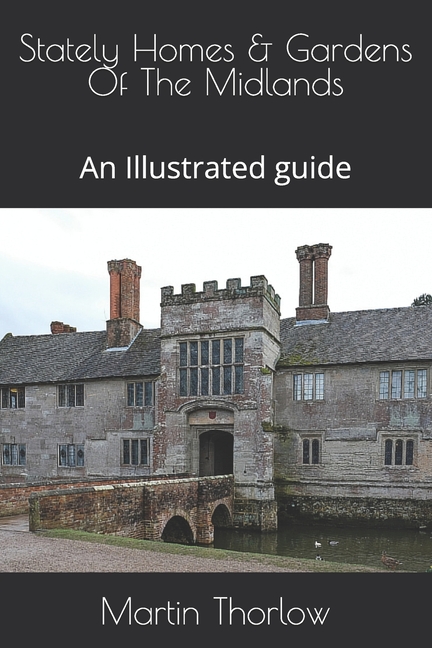Description
Rooted in Time: Exploring the Stately Homes and Gardens of the West Midlands
There is a quiet, unassuming magic to the West Midlands-a sense that history is not merely remembered here, but lived. This is a land where manor houses rest like sleeping giants among fields and orchards, and gardens unfurl with the seasons, reflecting centuries of horticultural passion and aristocratic ambition. In this colourfully illustrated book, we invite you to journey through some of the region's most evocative estates-each a world unto itself, steeped in character and charm.
Perched high above the Cotswold escarpment, Snowshill Manor is perhaps the most eccentric jewel in this crown. More cabinet of curiosities than conventional country house, it was the life's project of Charles Paget Wade, an architect and collector who filled its rooms with thousands of objects celebrating craftsmanship, folklore, and whimsy. Step into Snowshill, and you step into Wade's imagination. The gardens outside mirror his sense of theatre-terraced, intimate, and framed by dry-stone walls that catch the honeyed light. There is a timelessness here, as though the Manor exists slightly out of step with the modern world.
In contrast, Packwood House in Warwickshire offers a studied elegance-a house "to rival the best in England," as its 20th-century owner once declared. Its great hall, with soaring timber beams, speaks of medieval roots, but the real poetry lies in the yew garden: an otherworldly space of clipped topiary known as the "Sermon on the Mount." Silent green figures stand in rows, half-guardian, half-priest, watching over a landscape where faith and formality merge in green.
Further south, Hanbury Hall, nestled in Worcestershire countryside, dazzles with its symmetry and style. A Queen Anne red-brick beauty, it boasts interiors painted with ornate allegorical murals by Sir James Thornhill. But the gardens are no less theatrical: a restored formal parterre, fragrant orchards, and a walled garden that hums with bees and history. The National Trust's careful stewardship has returned much of the estate to its 18th-century grandeur, yet it remains a place of warmth and wonder, not mere preservation.
On the Herefordshire-Shropshire border, Berrington Hall and Gardens sits with a Georgian sense of calm and proportion. Designed by Henry Holland for the banker Thomas Harley, and landscaped by 'Capability' Brown himself, Berrington is a perfect marriage of architecture and landscape. From the elegant curves of the ha-ha to the reflective stillness of the lake, everything here is deliberate-crafted to please the eye, and ease the mind.
Not far off lies The Weir Garden, an almost secret space carved into a bend of the River Wye. More wild than manicured, this riverside garden feels like a hidden Eden, where Roman ruins slumber beneath grassy banks and giant gunnera leaves spill over ancient stonework. It's a place of discovery rather than design, where nature holds the brush and paints with abandon.
Spetchley Park Gardens, a private estate near Worcester, offers one of the most diverse horticultural displays in the region. Its gardens, developed over three centuries, are a kaleidoscope of plantings: rare trees, herbaceous borders, and sweeping lawns that lead the eye to distant hills. Still owned by descendants of the Berkeley family, Spetchley's charm lies in its continuity-a living garden shaped by the hands of generations.
Across these pages, richly illustrated in full colour, these and many more houses and gardens will come to life. Their stories are not only written in stone and soil but also in the air between rooms, the scent of roses in late June, the creak of oak staircases, and the flicker of light through stained glass. In the West Midlands, beauty and history grow side by side-and both are here waiting to be discovered.
Product Details
- Jul 12, 2025 Pub Date:
- 9798292250975 ISBN-10:
- 9798292250975 ISBN-13:
- English Language




